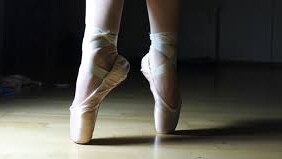
She miraculously healed ballet megastar David Hallberg’s achilles. Now Dr Sue Mayes AO is onto her next challenge — keeping our top dancers conditioned in lockdown.
By EMMA SANDALL from The Australian 27th August 2020
Australia’s ballet schools and companies are accustomed to looking towards the old world. It is, after all, where the art form was born 400 years ago in the courts of Italy and France.
Lately, though, Europe’s ballet companies are looking to Australia thanks to the groundbreaking work of the Australian Ballet’s artistic health team led by physiotherapist Susan Mayes.

How has a physiotherapist pulled global attention to a ballet company? The AB’s innovative injury prevention program has cut dancers’ ankle injury rates in half.
Injury in ballet is the No 1 concern. It is devastating for dancers, disappointing for audiences and costly for companies.
Mayes, who received an Order of Australia in June, grew up in Ballarat, Victoria. She had been pursuing dance seriously, first as a full-time student at the National Theatre in Melbourne and subsequently at the Centre for Performing Arts in Adelaide, when an injury landed her in a physiotherapist’s clinic. A new career possibility appeared before her, still strongly associated with dance.
She completed a bachelor of applied science (physiotherapy) and a graduate
diploma in sports physiotherapy at La Trobe University in Melbourne and decided to do her postgraduate sports physiotherapy placement at the AB. Soon afterwards, in 1997, Ross Stretton, the AB’s artistic director at the time, asked her to join the company as its first full-time touring physiotherapist.
In 2003, alarmed by the number of injuries resulting in surgery, Mayes conducted a physical screening of the dancers. She and her team were surprised by the results. They found that despite their years of training and conditioning work and their beautiful sculpted calf muscles, the dancers showed very poor calf strength endurance.
They also found a direct correlation: dancers with the poorest calf endurance had experienced ankle pain and injury in the previous six months.
To Mayes and her team, the results suggested the traditional daily ballet class, along with other conditioning programs such as Pilates, was not giving dancers enough strength in the right muscles to enable them to carry out their incredibly strenuous annual workload safely.
With 180 performances a year, the AB is one of the hardest working ballet
companies in the world.
The first task was possibly the hardest: how to convince dancers who had a deeply
ingrained fear that strengthening built bulk and destroyed their hard-won elongated lines that they needed more strength?
Mayes and her team were suggesting the company implement a program of highly specific strength endurance exercises for the dancers to perform in their daily class and outside to supplement their training.
This was radical — more strength, less stretch. To dancers whose day usually began lying around in all manner of stretches, legs splayed across the floor and along the ballet barres, it sounded shocking.
“It is all about communication, understanding dancers’ work and mentality and speaking their language,” says Mayes. “You will never convince a dancer to do something if they think it is going to ruin their aesthetic.”
What Mayes’s team had going for them was the fact they were all former dancers. Having that deep understanding of a dancer’s life built trust between the dancers and medical staff. It also took great courage from the artistic staff to agree to such changes.
“I remember Sue coming to me and saying, ‘I have all these ideas that I think could make things better.’ So I said: ‘Let’s try it,’ ” AB artistic director David McAllister recalls. “Everything started off as a trial, and if it didn’t prove successful then we would stop it.”
The new conditioning program worked. Within months the company’s dancers felt the benefits of the strength training and the injury rate improved.
In the past 10 years there have been fewer than 10 surgeries all told and only four ankle surgeries. Since 2005, there have been no hip surgeries, and since 2012 no dancer has missed a performance because of hip pain — a remarkable statistic for the world’s busiest ballet company.
“There’s nothing so successful as success,” McAllister says, grinning happily. Next
year he steps down after 20 years at the helm, leaving quite a legacy.
Insurance premiums, which once ate up a significant part of the company’s annual budget, have dropped too.
“Now we reinvest all that money back into the dancers themselves,” McAllister says.
The word spread. AB dancers who left the company to pursue careers overseas found themselves swamped by questions from their colleagues and staff about calf strengthening and the company’s unique injury prevention and management program.
These days Mayes speaks regularly at international dance and sports medicine conferences on topics ranging from the company’s calf endurance program and hip health to implementing change in challenging performance environments. She even has spent time at the Paris Opera Ballet, the bastion of classical ballet, talking to its health team about the AB’s injury management and prevention programs.
Perhaps what made the ballet world really take notice was the miraculous
rehabilitation of American ballet superstar David Hallberg. In 2015, Hallberg turned to the AB’s artistic health team after a surgery left his left ankle in such a bad way that he doubted he’d dance again.
“When I saw the state of his foot, I did worry about what we’d gotten ourselves into,” Mayes says. “He had a torn deltoid ligament and also a big hole in his achilles tendon. It looked very dramatic on an investigation.”
A lot of the team’s work with Hallberg was to rebuild his hope. Scans turn up abnormal pathologies that can get into a dancer’s head and make them overprotective and anxious. Mayes has discovered that more significant than the look of the scan is functionality. She had to persuade Hallberg to stop worrying about the specific pathologies inside his ankle and focus on the little goals he was achieving week by week.
Fifteen months later, Hallberg was back on stage. “It was incredibly emotional for us all,” says Mayes, who flew to New York City to see his opening performance as Albrecht in Giselle.
In recent years Mayes has had a packed schedule with the AB’s 77 dancers and her international speaking engagements. She has also been consultant physiotherapist to the North Melbourne Football Club for the past three years. It turns out that after years of sports physiotherapy helping dancers, there now is a lot that dance physiotherapists can offer the world of sport.
One thing in particular is an eye for technique and alignment. How you do your exercises really does matter. Mayes also emphasises the importance of strengthening the calf and intrinsic muscles in the foot for all athletes. One study has shown that the foot can generate 17 per cent of power through the body.
“If you don’t pay attention to strengthening it, you can waste all that potential power,” says Mayes. “Not to mention its potential for injury prevention and management.”
Provided the pandemic doesn’t put a halt to it, Mayes will be running a workshop on this in Monaco at the International Olympic Committee’s World Conference on Prevention of Illness and Injury in Sport in February next year. She also will join a panel of world-renowned physiotherapists to speak about “changing practice in a performance environment”.
It turns out that, physiologically, there is not such a great difference between dancers and other athletes after all. There is a lot one can learn from the other, and the AB has entered into a partnership with La Trobe University’s world-class Sport and Exercise Medicine Research Centre to keep progressing research in this area.
Recently, Mayes had a faced a vastly differently challenge.
As with all dance companies around the world, the AB has been sorely affected by the coronavirus pandemic and subsequent lockdowns.
Then, just as the company was getting its dancers back to the studio in June, Melbourne was hit with its second wave of COVID-19. This has meant for the past five months the dancers have had to do their daily classes and look after their physical and mental fitness from the confines of their homes.
“Dancers can maintain a significant amount of fitness during lockdown despite the fact they are confined to travelling, jumping and turning on a square metre of Tarkett,” Mayes says.
The health team was reassured after seeing the dancers return to the studio in great shape after the first lockdown.
Mayes’s team is using Telehealth appointments to discuss injury management and exercise programs. In addition to the daily online ballet class, the dancers have live online exercise classes and each dancer has an individualised exercise program.
The mental health of dancers also is extremely important. They thrive onstage and miss the natural endorphins they get from performing.
“The key is to keep them motivated,” Mayes says. “We ensure the artistic health team and the ballet staff connect with all the dancers regularly.”
On top of that, the company employed a welfare and development co-ordinator last year who supports their mental health daily.
“In the past, most dancers could not imagine doing anything else but dance and their identity completely revolved around being a professional dancer,” Mayes says. “This lockdown has allowed the time for them to actively work on their offstage identity.”
Mayes’s star patient, Hallberg, is preparing to pick up the reins as the AB’s next artistic director. Now the company has established such a strong base of physical and mental wellbeing for the dancers, Hallberg is keen to push their physicality and technique and help them explore their limits.
Mayes agrees that once injury management and prevention and general wellness has been tackled, the team is there to help the dancers to achieve their performance goals and to reach for new ones.
“The holy grail is to find a way to measure performance,” Mayes says.
Whereas in sport you can count the number of goals kicked, or the number of passes, or the speed, ballet is not so simple.
“It is important that dancers strive for optimal ballet technique but only for the purpose of greater expressive freedom,” Mayes says. “Ballet is an art after all.”
By EMMA SANDALL from The Australian 27th August 2020
You might like these other resources
Are Your Bones Strong Enough?
28 May 2024
BEWARE YOUR SCAN RESULTS!
23 February 2023
STAY OUT OF THE BASEMENT THIS SUMMER
23 December 2022
Staying Healthy – The Missing Pieces Of The Puzzle
17 November 2022
So I Don’t Need A Knee Reconstruction Anymore?
8 September 2022





